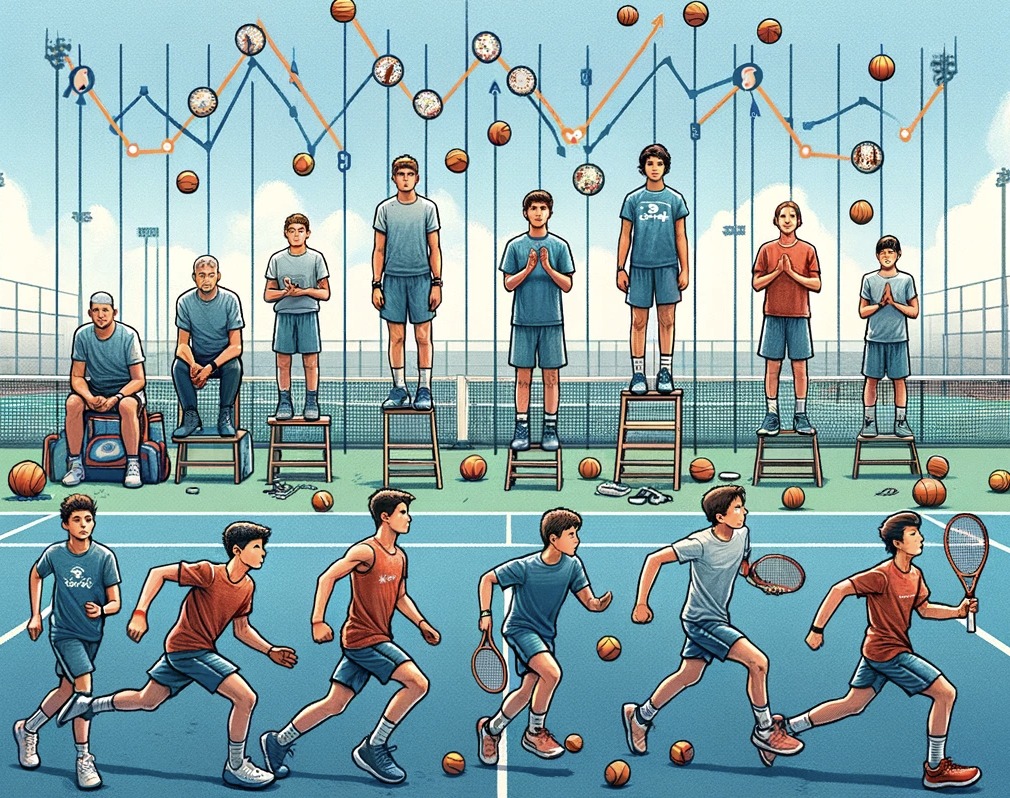A 1-year longitudinal study of physical fitness in Tunisian junior tennis players
DOI:
https://doi.org/10.61838/kman.tjssm.1.1.4Keywords:
Physical fitness; Tennis; Age; Training; Adolescent.Abstract
Background: Tennis, a sport demanding high levels of physical fitness, combines various aspects of athleticism such as agility, endurance, strength, and speed. The development of these attributes in junior players is crucial for their progress in the sport. Understanding the impact of structured tennis training on the physical fitness of junior players can provide valuable insights into the effectiveness of training programs and guide future coaching strategies.
Objective: This study aimed to assess the effects of 1-year of tennis practice on the physical fitness of Tunisian junior players.
Methods: Sixty-two healthy participants were enrolled, divided into two groups, tennis players (TP) (n = 36) and controls, where the participants sedentary, (n = 26), each group was divided into two subgroups U14 and U16 age-groups. Physical fitness tests were conducted at baseline (T0) and after one-year (T1), including standing long jump, countermovement jump, medicine ball throw (MBT), 5m, 10m, and 20m sprints, sideways shuffle, Zigzag, spider drill, 20m shuttle run, and sit and reach (SAR) tests.
Results: Jump performances increased significantly for TP in U14 and U16 compared to controls at T0 and T1. In both age-groups, MBT performance increased significantly for TP, with U16 for both groups were higher at T0 and T1 (p<0.05). The 5m and 10m sprints increased significantly for TP in both age-groups, though controls decreased in the 5m sprint in U14 (p<0.05). The 20m sprint increased significantly for TP in U14 and U16 (p<0.05), with U16 outperforming U14 at T0 and T1 (p<0.05). Sideway shuffle and spider drill performances significantly improved for TP (p<0.05), while decreased in controls (p<0.05). The Zigzag test and the maximum oxygen intake increased significantly for TP across both age-groups at T0 and T1, whereas controls' performance decreased in U14 (p<0.05).
Conclusion: TP's SAR was significantly better than controls (p<0.05). In conclusion, tennis training enhances young athletes' physical fitness, improving agility, sprinting, jumping, and endurance compared to controls, reporting better results in U16 compared to U14 for most of tests.

Downloads
Additional Files
Published
Issue
Section
License
Copyright (c) 2023 Saeed Meflah Alshahrani, Atef Salem, Anis Zribi, Khaled Trabelsi, Achraf Ammar, Hamdi Chtourou (Author)

This work is licensed under a Creative Commons Attribution-NonCommercial 4.0 International License.






